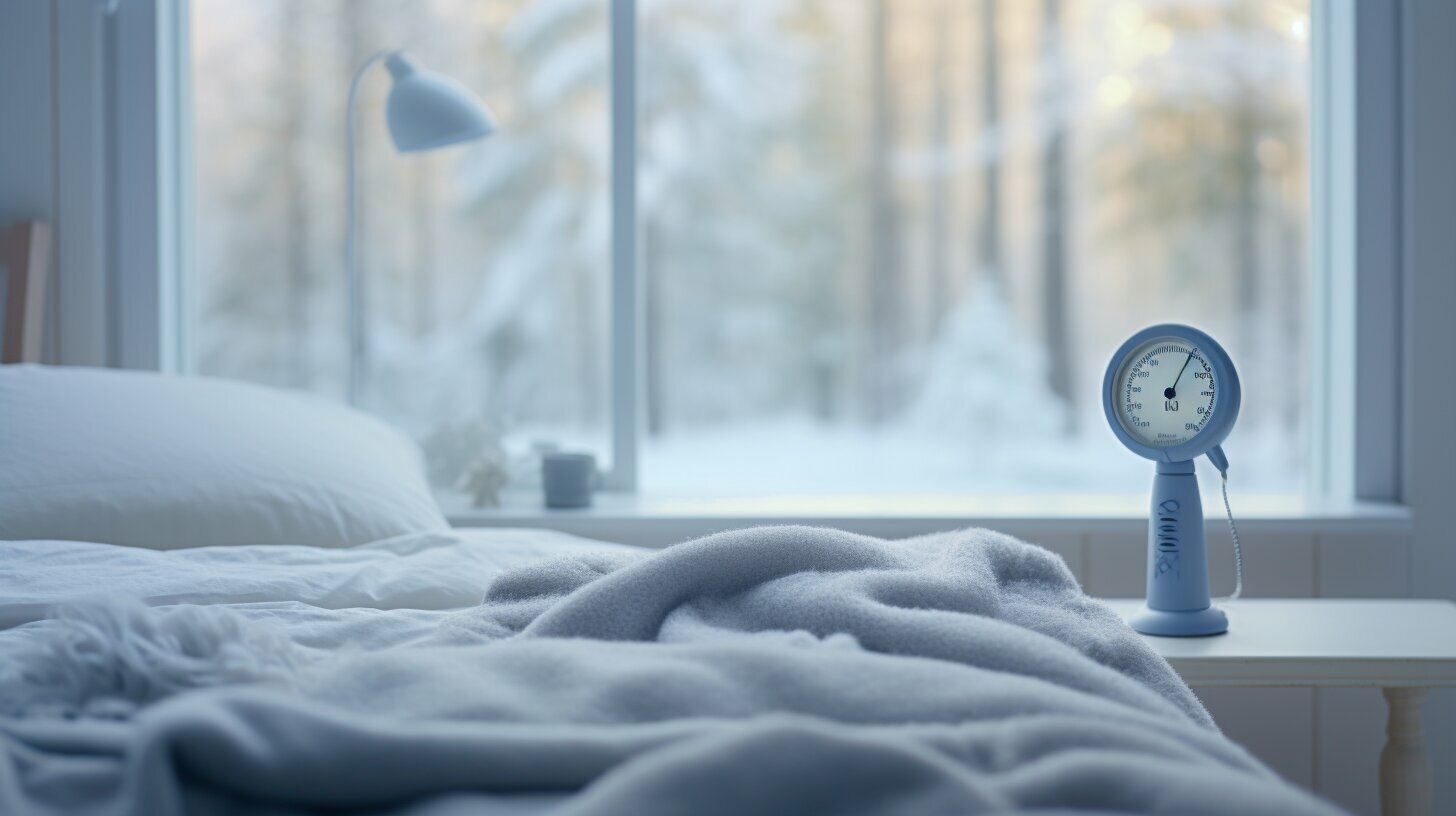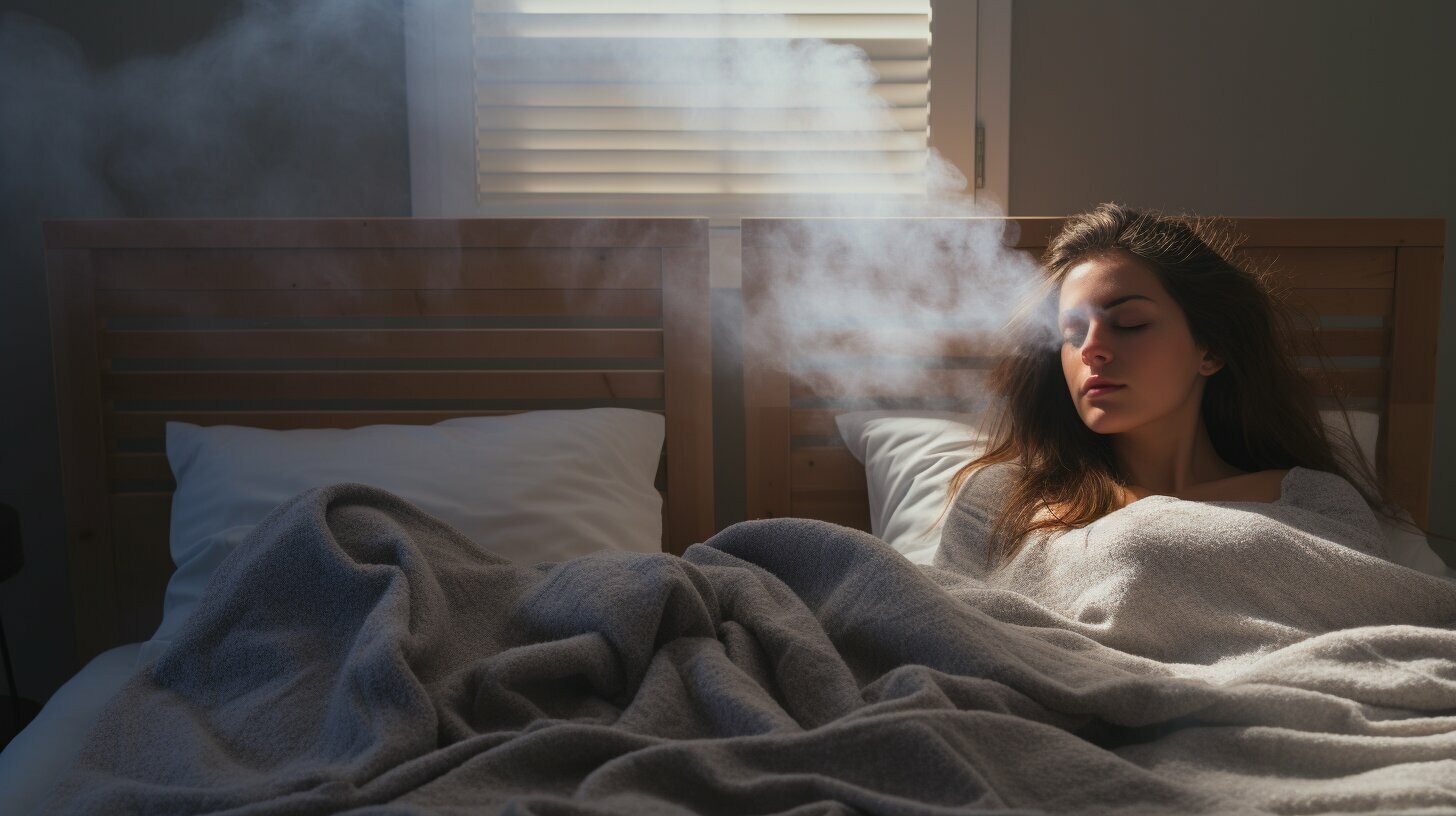
Sleep Temperature
Sleep temperature plays a crucial role in your nightly rest. Discover how to create the perfect sleep environment by understanding and managing it effectively.
Key Takeaways
- Optimal sleep temperature ranges from 60–68°F (15.6–20°C)
- Thermoregulation supports sleep stages and circadian rhythm
- Smart bedding and airflow help maintain comfort
- Infants need slightly warmer rooms with close monitoring
Why Sleep Temperature Matters
Your body has a built-in temperature regulation system that initiates a cooling process before bedtime. This drop in core body temperature signals your body to wind down. If your bedroom is too hot or too cold, it can disrupt this natural rhythm, resulting in fragmented or restless sleep.

According to research on how temperature affects sleep, most people rest best in environments between 60–68°F (15.6–20°C). This range supports melatonin production and helps usher the body into deeper sleep stages.
The Science Behind Thermoregulation
Thermoregulation is how your body maintains its internal temperature. During sleep, vasodilation helps shed excess heat through widened blood vessels. A cooler bedroom environment supports this process, making it easier for you to drift into sleep and stay asleep.

Melatonin not only induces sleepiness but also cools your core temperature. For more insights into this process, review findings from this scientific study on thermoregulation. Circadian rhythms, tightly linked to temperature and light cues, are essential for healthy sleep patterns.
Finding Your Ideal Sleep Temperature
- Adults: 60–68°F (15.6–20°C)
- Infants: Around 68–69°F (20–20.5°C); avoid overheating
Personal preferences vary, so trial and error is key. If you’re struggling with comfort despite optimal temps, you might explore our guide to bed cooling accessories for effective tools that complement your sleep space.
Signs Your Room Temperature Is Off
- Waking up sweaty or with chills
- Difficulty falling asleep
- Dry throat or congestion
- Frequent nighttime awakenings
- Relying heavily on fans or blankets
How to Regulate Sleep Temperature
During the Day
- Use blackout curtains to block sunlight
- Minimize heat from electronics
- Install reflective window film
- Maintain consistent air circulation
At Night
- Lower the thermostat
- Open windows if safe
- Use breathable pajamas and bedding
- Try a fan or air conditioning unit

Smart Bedding Choices
- Sheets: Cotton or bamboo for breathability; check out luxurious options for better sleep
- Blankets: Layer lightweight covers
- Mattress toppers: Cooling gel options available
- Pillows: Gel-infused or shredded memory foam
If your mattress retains heat, you may benefit from our reviews of the best mattresses for temperature regulation.
Circadian Rhythm and Temperature
Sleep temperature directly impacts your circadian rhythm. As the room cools and light dims, melatonin production increases, signaling it’s time for bed. Learn how to reset your circadian rhythm naturally and align it with temperature cues. To aid this, avoid screens before sleep, and use soft lighting or amber glasses when needed.
Tips for Infants’ Sleep Temperature
- Light layers and sleep sacks instead of blankets
- Room thermometer for accurate monitoring
- Crib placement away from windows and heaters
The CDC offers safe sleep environment guidelines that can further help you tailor your nursery setup.
Warmth and Sleep Stages
Heat can interfere with REM and deep sleep, causing restlessness and night sweats. A comfortably cool room supports transitions into restorative sleep phases, helping your body repair and recharge more effectively.

Practical Tricks for Better Sleep Temperature
- Warm bath one hour before bed
- Moisture-wicking pajamas
- Programmable thermostat settings
- White noise fan for air and sound
- DIY coolers: ice bowl in front of fan
- Keep a spray bottle of cool water nearby
Additionally, if your mattress emits unwanted odors or heat, you might be interested in how to minimize off-gassing for a cleaner, cooler sleep.
Summary
Sleep temperature regulation isn’t just about comfort—it’s a cornerstone of quality rest. By understanding your body’s needs and optimizing your sleep setup, you create an environment where deep, uninterrupted sleep can thrive. In fact, as NIH research suggests, sleep temperature can even influence metabolic health. Consistent, restorative sleep begins with the right temperature.
FAQ
What is the best sleep temperature for adults?
The ideal sleep temperature for most adults is between 60–68°F (15.6–20°C), supporting natural thermoregulation and restful sleep.
Why do I wake up hot at night?
Waking up hot may be due to an overly warm room, non-breathable bedding, or natural body temperature fluctuations during REM sleep.
How can I keep my bedroom cool in the summer?
Use blackout curtains, run fans, sleep with light bedding, and set your thermostat lower at night to maintain ideal sleep temperature.
Learn more in how to choose the perfect mattress.
i>
